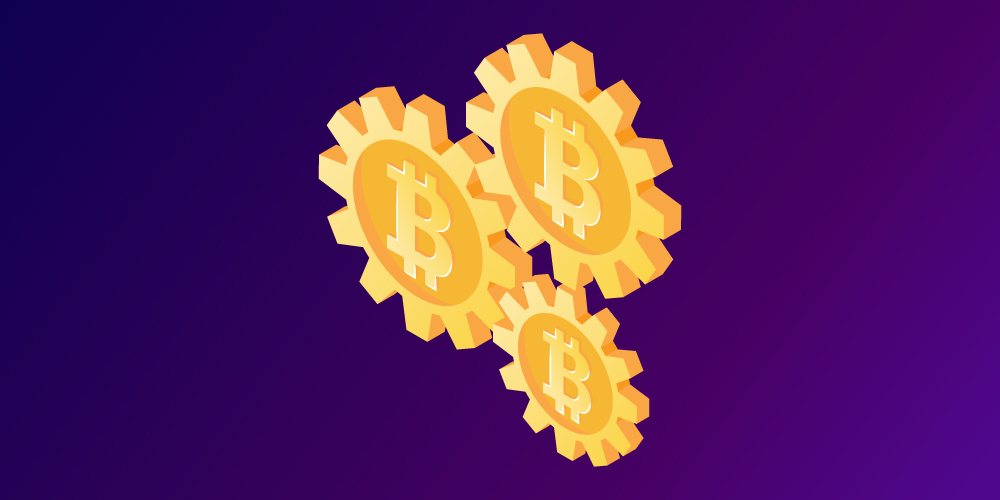Everyone seems to be looking at Bitcoin as the price hits new all-time highs, its supporters celebrate, and the economists who long ago declared it dead and worthless scratch their heads in confusion. Yes, and statements about the” bubble ” recently, something is not heard.
Bitcoin – an innovation, or a repetition of the past?
“The uncomfortable reality for the early idealists is that 12 years later, the Bitcoin ecosystem has more in common with the current ecosystem, hoping to displace this initial utopian vision,” wrote Isabella Kaminska, a longtime critic of cryptocurrencies, before the price surge in recent months.
She’s more right than she thinks. In a sense, this means that Bitcoin is approaching the monetary commodity dream that it has always harbored: it faces some eternal problems common to all monetary systems. Moreover, we should take the opportunity to recall some monetary history, as people in the cryptocurrency world have never been particularly knowledgeable about our monetary past. The audience they serve is even less informed, so the “Bitcoin Heroes” – Sayfedan Ammous, Robert Breedlove, etc. – are celebrated for their wisdom, no matter how primitive or inaccurate they are.
It’s easy to abandon a whole field of centuries-old academic research, especially if you’ve never encountered it. Some modesty is recommended, because, as Denis Patrick O’Brien writes in his collection of scholarly articles, The Development of the Monetary Economy, “the monetary economy attracted some of the very best people who wrote about economic problems.”
Unlike Bitcoin’s money supply mechanism, which has been carved into tablets since its inception, many of its alternative coin competitors want to set their own monetary policy by outlining arcane rules in bizarre official documents that only insiders have the right to make changes to. This debate about rules and discretion as to who runs the printing press dates back about three centuries, if not more, and has been thoroughly researched by the likes of Adam Smith, Benjamin Franklin, Thomas Tooke, Horsley Palmer, Walter Badgehot, John Clapham, and others.
Many innovations in the field of cryptocurrencies are not so new, and quickly run into exactly the problems that plagued the economies of the past: they were immediately investigated and challenged by long-dead and forgotten monetary economists.
When Bitcoin was small and insignificant, the dollar cost of sending value over the network was negligible. In the first few years of cryptocurrency’s existence, this was one of the best reasons to use it: you could send any amount to anyone in the world, much cheaper and faster than the legacy banking system of the 2000s. It was the right thing to do. Legacy systems were slow and expensive, and international banking just 15 to 20 years ago was a headache for far more people than money laundering.
The internet, effective competition, and the rise of fintech have changed all that, but the loudest bitcoiners are in the past, shouting that their magnificent invention still outperforms the system against which Bitcoin was created. In most cases, this is not the case: unless you live under authoritarian regimes or try to run a shady business (two very important but relatively small market segments), using Bitcoin for its original transactional purposes is not so great.
How Our Monetary Past Affects Bitcoin’s Current Problems

- Second layers.
After 2017-hype, congestion, forks, and a battle over block sizes – the winning faction has found a tempting solution to its problems with the crowded mempool: second tiers like the “Lightning Network” or similar services like Liquid. Instead of being settled on the main Bitcoin blockchain, most of the secondary transactions will take place on the second layer, which is only occasionally established on the main network. Thus, each intra-chain transaction can include many more underlying transactions that are mutually mapped to each other. The second levels make sense against Bitcoin’s inherent supply schedule problem.
It was just a re-invented old commercial banking system, and trust was sneaking in through the back door. The commercial banking system (with or without a central bank), freely issuing notes and deposits redeemable in some foreign currency, was also a second layer on top of the main currency layer, which in our monetary past was often gold or silver. The second-tier solutions described now are supposedly fully redundant, and have no maturity mismatch, but they started banking early on, before they evolved into the secure fractional reserve banks that Bitcoiners hate so much.
Just like you have to trust your commercial bank, with Bitcoin, you have to trust the second-tier networks you join, so that no one escapes with your BTCs, or gets their transactions back. Not your keys, not yours… uh, transactions.
Why would someone in the past take paper money, the value of which can be greatly inflated? And the bank that issued them carries counterparty risk instead of a “hard currency” such as gold. “Easy,” noted Ray Perman in his magnificent financial history of Edinburgh: “The first paper notes were considered more valuable than coins because they could not be devalued, and their printing did not affect their value.” There are no risk-free baselines; you choose your own poison. And sometimes, to the fury of Bitcoin maximalists, this poison is not the technical obstacles of crypto but the sweet insecurity of political governments and central banks, as well as our established systems of international commercial banking.
- Payment speed and cost

To make a high-priority transfer on the Bitcoin network, that is, in order for your transaction to be included in the next few blocks, you must pay approximately 30 cents during periods of low traffic, and closer to 20 or 30 US dollars during periods of high traffic. Many Bitcoin wallets allow you to send transactions with “Low Priority” settings, which means that they will be cleared on the network, possibly in a day or two. This usually brings the price closer to that 30 cents than the $ 30 mentioned.
But wait, isn’t the beauty of Bitcoin that transactions were cheap and fast compared to the banking system it replaces? It seems that this brilliant technology has faced exactly the trade-off between speed, cost, and finality that our legacy systems have struggled with for centuries.
Surprise: The revolutionary Bitcoin network has come full circle You can have efficient and therefore cheap payments, fast payments, or secure payments, but not all three. When Satoshi Nakamoto programmed finality into the Bitcoin protocol, users could not compromise on this aspect. Instead, they were left to choose between fast or cheap payments. Just like a normal banking system.
- Black boxes move around
Another version of this is the BTC in side chains, such as the tBTC project or Wrapped BTC, where trusted custodians hold your crypto assets in exchange for a claim on that Bitcoin, an asset that itself lives in another cryptocurrency chain, say Ethereum. Ideally, users would be able to move Bitcoins at a much lower price than in the main chain: instead of moving a real BTC, the user moves a digital box containing the specified crypto asset.
In many places in our financial past, we have used shiny metallic gold as the basis of money. Moving it, especially in large batches, was clumsy and expensive. In the open sea, ships with it could sink, and thieves lurked in the forests of Europe. For now, the analogy between gold and Bitcoin should be clear and obvious.
Financial systems in Britain or the Dutch Republic have solved this costly transportation problem with paper-based gold deposit requirements. Over the centuries of international trade, bills of exchange moved around the world, and only occasionally did the main monetary base move. These “wrapped Bitcoins” of the past allowed the expensive underlying asset to remain at rest, while paper claims to it instead moved.
The financial system at various points in international trade used bills of exchange – credit securities-to deduct transactions between them, supporting the real economy with a complex and efficient banking system running in the background. In times past, this made it easier to use gold as money, in cryptocurrency times, making Bitcoin, with its highly volatile transaction fees, easier to move around.
For all the revolutionary credo that surrounds the nascent monetary commodity that is Bitcoin, it seems that its future increasingly resembles the past that it tried to get rid of. Happy times for us innovators.


